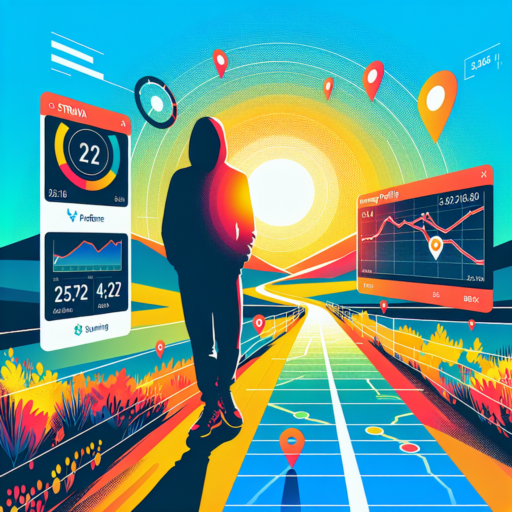What is Strava profile?
A Strava profile acts as a digital portfolio for athletes and fitness enthusiasts on the Strava platform. It’s a personalized page that showcases an individual’s athletic activities, achievements, and social connections within the Strava community. This profile serves as the hub from which users can track their performance, set new goals, and engage with other athletes.
Within a Strava profile, users can find detailed activity summaries that include metrics such as distance covered, pace, elevation gained, and calories burned. This data provides a comprehensive view of one’s fitness journey, allowing for performance analysis and progress tracking over time. Additionally, users can share photos, participate in challenges, and join clubs, which adds a social dynamic to the training experience.
The Strava profile also enables personalization through the setting of privacy levels, allowing athletes to control who views their activities and achievements. This customization fosters a sense of community, encouraging interaction through kudos and comments on each other’s workouts. It’s this blend of competitive insight and camaraderie that makes the Strava profile a cornerstone of the athletic social media landscape.
Are Strava profiles public?
When discussing the privacy of fitness enthusiasts and athletes on digital platforms, a common question arises: Are Strava profiles public? Strava, a popular social network and mobile app for tracking athletic activity, allows users to share their workouts and accomplishments with a community. By default, Strava profiles are set to public, meaning that unless adjustments are made to the privacy settings, any data shared—including routes, times, and photos—can be accessed by other Strava users and sometimes even the broader internet.
Adjusting Strava Privacy Settings
For users concerned about the visibility of their Strava activities and profile, the platform offers several customizable privacy settings. These settings enable users to control who can see their activities, personal information, and specific items like start and end points of routes. It’s possible to set activities to be viewable by followers only, or even to keep them completely private, viewable only to the user themselves. Moreover, Strava provides a feature known as «Enhanced Privacy,» offering an additional layer of control over one’s digital footprint on the platform.
It is important for users to review and understand the implications of their chosen privacy settings. Not only does this affect who can view their activities and profile, but it also influences their visibility on leaderboards and participation in challenges. While some may prefer the motivation that comes from public validation and competition, others may prioritize privacy and the security of their personal information and locations.
How do I find my Strava profile?
Locating your Strava profile is a straightforward process that allows you to access your cycling and running statistics, connect with friends, and much more. Whether you’re new to Strava or a seasoned user, knowing how to find your profile can enhance your experience on this popular fitness tracking platform.
Using the Strava App
For mobile users, the Strava app is the most convenient way to locate your profile. After opening the app, simply tap on the «Profile» tab located at the bottom right corner of the screen. This section showcases your activities, personal records, and other relevant metrics. It’s a quick way to dive into your performance stats and share updates with your Strava community.
Accessing Strava on the Web
If you prefer using a computer, navigating to your Strava profile is also easy. Visit the Strava website and log in with your credentials. Once logged in, click on your name or the profile icon in the upper right corner. This action drops down a menu where you can select «My Profile.» Clicking this option will take you to your profile page, where you can view and edit your activities, achievements, and account settings.
Remember, keeping your profile updated and engaging with other Strava users can greatly enhance your Strava experience. Whether through the app or the website, finding and customizing your profile is the key to getting the most out of Strava’s numerous features and vibrant community.
No se han encontrado productos.
Does Strava tell you if someone views your profile?
Many Strava users wonder about the privacy and transparency features of the platform, especially when it comes to knowing who has viewed their profile. Strava, primarily known as a social fitness network that allows athletes to track their activities, share photos, and follow each other’s fitness journeys, has certain privacy settings, but does it extend to notifying users about profile views?
Understanding Strava’s Privacy Settings
Strava provides several customizable privacy settings allowing users to manage who can see their activities, training logs, and personal data. However, when it comes to profile views, Strava does not currently offer a feature that notifies users when someone else views their profile. This aligns with Strava’s approach to privacy and community engagement, focusing more on the sharing of activities and mutual encouragement within the fitness community.
Despite the lack of a direct notification feature, Strava users can still get an insight into their profile’s visibility and interaction levels through other means. For instance, receiving kudos, comments, or new followers can be an indirect indicator of who’s been engaging with your Strava content. These interactions are often the closest users can get to understanding who has taken an interest in their profile.
Alternative Ways to Monitor Engagement
For those particularly keen on monitoring their profile’s reach and engagement, focusing on the engagement metrics available can be helpful. Although direct profile view notifications are absent, paying attention to the dynamics of kudos, comments, and followers can provide useful insights into your profile’s visibility and which aspects of your activities are drawing attention.




